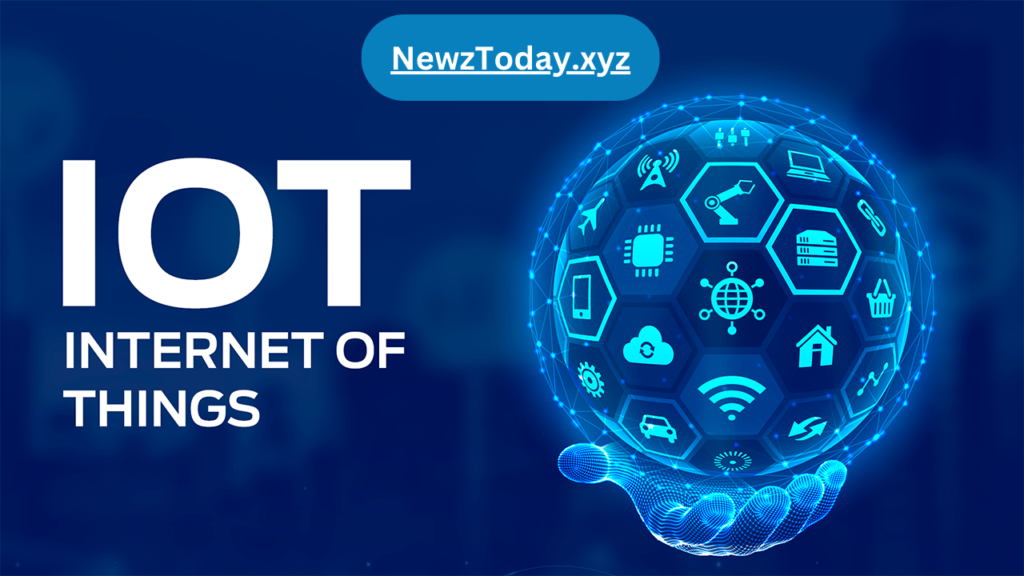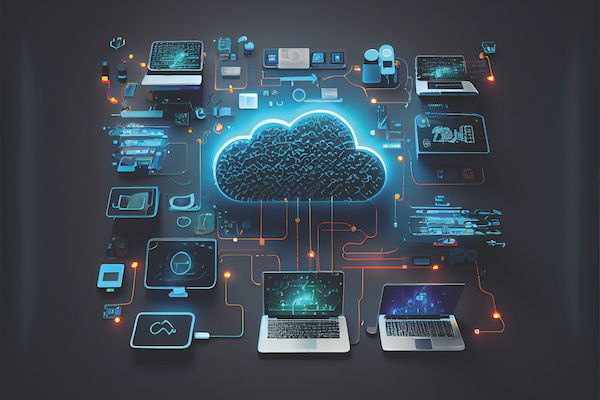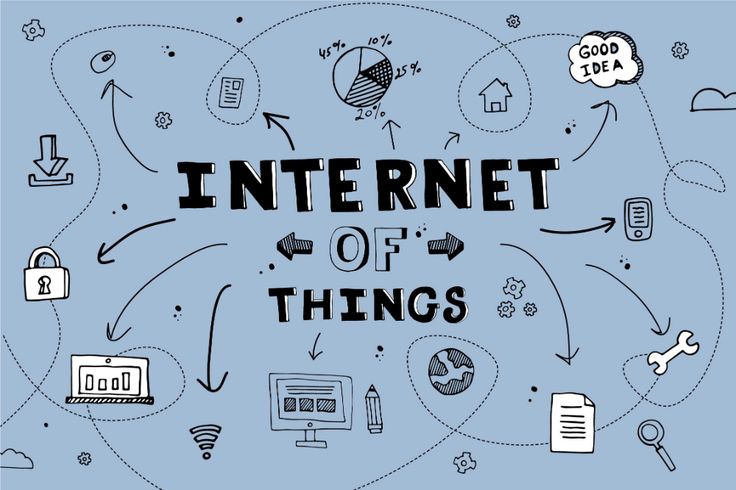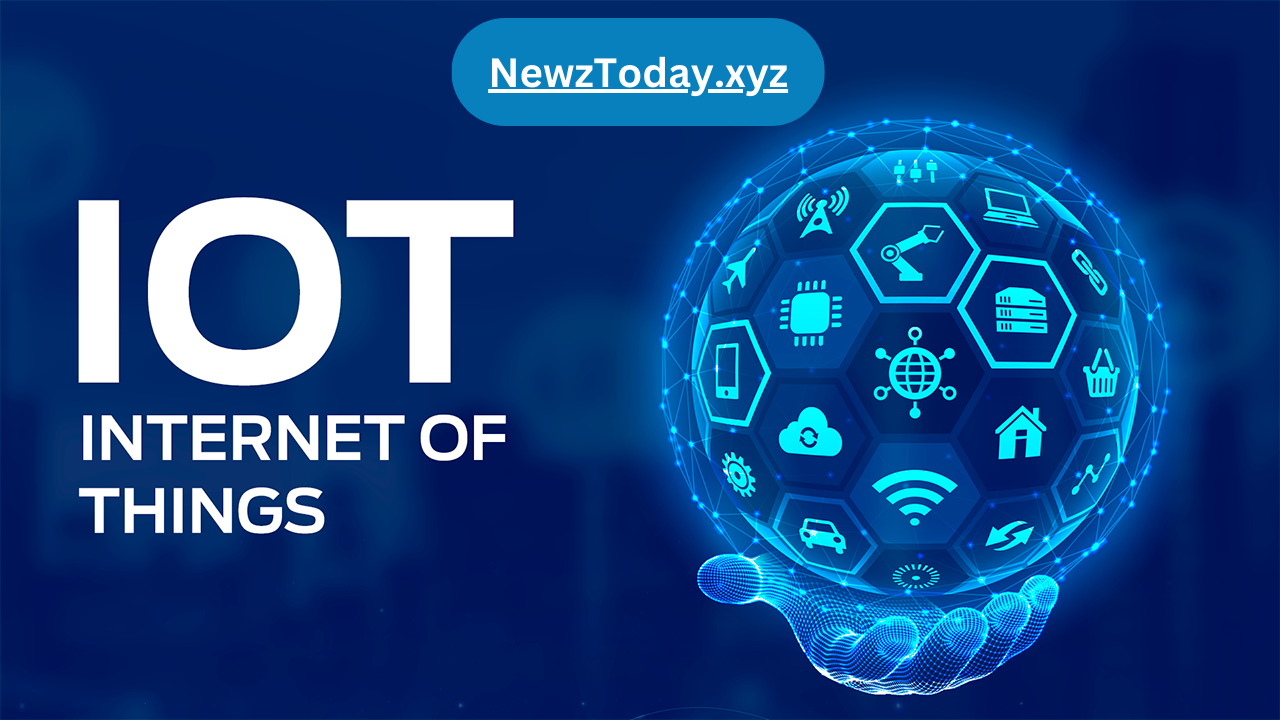What Is IoT?
The Internet of Things (IoT) alludes to the organization of actual articles (“things”) implanted with sensors, programming, and different advancements that empower them to interface and trade information with different gadgets and frameworks over the web. These “things” can incorporate a great many gadgets,

Example:
Savvy Home Gadgets: Indoor regulators, lights, and home security frameworks that can be controlled from a distance.
Wearables: Wellness trackers and smartwatches that screen wellbeing measurements.
Modern Hardware: Apparatus in production lines that screen execution and report support needs.
Vehicles: Vehicles with sensors that track motor execution or give continuous traffic information.
Medical services Gadgets: Clinical gadgets that screen patient wellbeing and convey information to medical services suppliers.
Parts of IoT:
Gadgets/Sensors: These are the “things” in IoT. They gather information from the climate, like temperature, light, movement, or some other sort of quantifiable data. Gadgets can go from straightforward sensors to complex machines.
Network: Whenever information is gathered, it should be sent to a focal framework or different gadgets. Availability is given by different correspondence conventions like Wi-Fi, Bluetooth, Zigbee, cell organizations (like 4G/5G), and, surprisingly, satellite.
Information Handling: After the information is gathered and sent, it should be handled. This can happen locally on the gadget (edge processing) or in a concentrated framework like a cloud server. The handling could include investigating information, running calculations, or pursuing choices given the information.
UI: The last part is how the handled information is introduced to clients. This could be through versatile applications, web connection points, dashboards, or robotized alarms. The connection point permits clients to screen and control the IoT gadgets.
Utilizations of IoT:
Brilliant Homes: IoT gadgets in savvy homes incorporate shrewd lights, indoor regulators, locks, and surveillance cameras. These gadgets can be controlled somewhat through applications, and they could mechanize errands like changing the temperature when you take off from the house.
Medical care: IoT in medical care incorporates wearable gadgets that screen fundamental signs, brilliant beds that track patient developments, and associated inhalers that guarantee drug adherence.
Modern IoT (IIoT): Plants and businesses use IoT to screen hardware, enhance creation processes, and foresee upkeep needs, diminishing margin time and expanding effectiveness.
Horticulture: Ranchers use IoT gadgets to screen soil dampness, control water system frameworks, and track domesticated animals’ wellbeing, prompting more effective cultivating rehearses.
Brilliant Urban areas: IoT is utilized in metropolitan preparation and the board, including traffic signals, squandering the executives, energy utilization, and in any event, observing air quality.
Associated Vehicles: Current vehicles come outfitted with IoT innovation that empowers highlights like ongoing routes, far-off diagnostics, and independent driving.
Difficulties of IoT:
Security: As additional gadgets interface with the web, the gamble of cyberattacks increases. Getting these gadgets and the information they gather is a huge test.
Interoperability: With such countless gadgets and stages, guaranteeing they can convey and cooperate flawlessly is complicated.
Information Protection: IoT gadgets gather huge measures of information, frequently private or touchy. Safeguarding this information and guaranteeing protection is a main issue.
Adaptability: As the quantity of IoT gadgets develops, the foundation to help them (like organization transfer speed and distributed storage) necessities to appropriately scale.
Energy Utilization: Numerous IoT gadgets are battery-fueled, so overseeing energy utilization and broadening battery duration is critical.
The Eventual Fate of IoT:
The eventual fate of IoT looks encouraging with progressions in innovation. Arising patterns include:
5G Organizations: With a quicker and more solid network, 5G will uphold countless IoT gadgets, especially in applications like independent vehicles and shrewd urban communities.
Edge Figuring: Handling information closer to where it is created (at the edge) diminishes inactivity and transfer speed use, making IoT frameworks more effective.
Man-made brainpower (artificial intelligence) and AI (ML): Coordinating computer-based intelligence and ML with IoT will empower gadgets to settle on more intelligent choices, anticipate results, and adjust to changing circumstances independently.
Blockchain: For getting IoT information and exchanges, blockchain innovation can give a decentralized and carefully designed record.
High level Ideas in IoT:

Computerized Twins:
A computerized twin is a virtual imitation of an actual item or framework. In IoT, computerized twins are utilized to recreate and examine the way of behaving of actual gadgets progressively. For instance, a computerized twin of a modern machine can be utilized to anticipate disappointments, improve execution, and even test new designs prior to applying them in reality.
Edge versus Distributed computing:
Edge Registering alludes to handling information near where it is produced (on the edge of the organization, for example, on the IoT gadget itself or a close by door. This diminishes inertness, limits transmission capacity use, and improves constant direction.
Distributed computing includes sending information from IoT gadgets to incorporated cloud servers for handling and stockpiling. The cloud offers adaptability, strong figuring assets, and the capacity to incorporate tremendous measures of information from various sources. Numerous IoT frameworks utilize a blend of edge and distributed computing to adjust the advantages of the two methodologies.
IoT Stages:
An IoT stage is a complex innovation that empowers direct provisioning, the board, and mechanization of associated gadgets. It gives instruments to associating gadgets, overseeing information, and empowering applications. Instances of famous IoT stages incorporate AWS IoT, Google Cloud IoT, Microsoft Sky blue IoT Center point, and IBM Watson IoT.
These stages frequently offer underlying highlights for gadget the board, information investigation, and combination with other undertaking frameworks, assisting organizations with speeding up their IoT arrangements.
Low-Power Wide-Region Organizations (LPWAN):
LPWAN advances, like LoRaWAN, Sigfox, and NB-IoT, are intended for long-range correspondence with low power utilization. These organizations are great for associating gadgets that need to send modest quantities of information over significant distances and are much of the time utilized in applications like shrewd horticulture, resource following, and natural observing.
IoT Security Systems:
Getting IoT gadgets is a basic concern, given their far and wide organization and frequently restricted computational assets. Security structures for IoT incorporate equipment based safety efforts (like secure boot), encryption conventions, secure correspondence channels, and hearty verification systems.
The Zero Trust model is building up some decent momentum in IoT security. It accepts that no gadget or client is reliable as a matter of course, and all associations should be validated and approved, diminishing the gamble of unapproved access.
Arising Patterns in IoT:
AIoT (Man-made reasoning of Things):
AIoT alludes to the reconciliation of Man-made consciousness (simulated intelligence) with IoT gadgets. AIoT frameworks use man-made intelligence calculations to dissect information gathered by IoT gadgets, empowering prescient support, oddity location, and independent navigation. For example, simulated intelligence can be utilized to enhance energy use in brilliant structures or work on the exactness of wellbeing checking gadgets.
Self-Mending Frameworks:
Self-mending IoT frameworks are intended to recognize and recuperate from issues or disappointments without human mediation consequently. This idea is especially pertinent in basic applications like modern computerization, where free time can be expensive. These frameworks can reroute traffic, restart gadgets, or change to reinforcement parts when a disappointment is recognized.
IoT and Blockchain:
Blockchain innovation is being investigated as a method for getting IoT gadgets and information. The decentralized idea of blockchain can assist with guaranteeing that information from IoT gadgets is carefully designed and that exchanges between gadgets are secure. This is especially helpful in production network the executives, where following the provenance and legitimacy of merchandise is vital.
Quantum IoT:
While still in its beginning phases, quantum processing holds the possibility to alter IoT. Quantum PCs can handle monstrous measures of information a lot quicker than traditional PCs, which could empower more refined IoT applications, like constant streamlining of mind boggling frameworks and improved security conventions.
IoT in 6G Organizations:
6G is the up and coming age of remote innovation, expected to outperform 5G in speed, limit, and unwavering quality. With 6G, IoT gadgets could accomplish close immediate correspondence, empowering super low-idleness applications like far off a medical procedure, independent vehicles, and brilliant urban communities with cutting edge framework.
Use Cases and Industry Models:
Brilliant Retail:
IoT is changing retail by empowering customized shopping encounters, advancing stock administration, and improving security. Brilliant racks outfitted with RFID labels can consequently follow stock levels, while IoT-based reference points can send customized offers to clients’ cell phones as they shop.
Associated Medical services:
Telemedicine and far off quiet observing are critical IoT use cases in medical services. Gadgets like associated pulse screens and glucose meters permit patients to send their wellbeing information straightforwardly to their PCPs, empowering all the more convenient and exact clinical consideration.
Energy The board:
IoT is utilized in shrewd networks to screen and oversee energy use across whole urban communities. Brilliant meters give constant information on power utilization, empowering utilities to streamline power conveyance and decrease squander. Moreover, IoT gadgets in homes and organizations can computerize energy-saving measures, such as changing lighting or central air frameworks in view of inhabitance.
Farming IoT (AgriTech):
IoT is driving accuracy farming, where sensors and robots screen crop wellbeing, soil conditions, and weather conditions. Ranchers can utilize this information to upgrade water system, treatment, and vermin control, prompting better returns and more manageable cultivating rehearses.
Shrewd Transportation:
In transportation, IoT empowers armada the executives, where planned operations organizations can follow vehicle areas, screen driver conduct, and streamline conveyance courses. Brilliant traffic the executives frameworks use IoT sensors to screen traffic stream and lessen clog, further developing wellbeing and diminishing travel times.
Difficulties and Future Headings:
Normalization:
One of the greatest difficulties in IoT is the absence of normalization. With such countless gadgets, stages, and correspondence conventions, interoperability is a significant issue. Industry gatherings and normalization bodies are attempting to make normal structures, yet the variety of purpose cases and innovations makes this a complicated undertaking.
Supportability:
As IoT gadgets multiply, worries about their ecological effect are developing. Numerous IoT gadgets are battery-controlled, prompting difficulties in reusing and squander the board. There is a developing accentuation on creating economical IoT arrangements, including energy-productive gadgets and frameworks intended for long haul use.

Moral Contemplations:
The broad arrangement of IoT gadgets raises moral worries, especially around protection and observation. As IoT frameworks gather immense measures of information, there is a requirement for straightforward strategies on information possession, assent, and use. Guaranteeing that IoT innovations are created and sent morally is difficult for what’s to come.
Strength and Unwavering quality:
For IoT frameworks to be generally taken on in basic applications, they should be exceptionally dependable and versatile to disappointments. This incorporates guaranteeing that gadgets can keep on working in case of organization blackouts or different disturbances and that they can recuperate rapidly from disappointments.
What is IoT?
IoT represents the Web of Things, an organization of actual items (like gadgets, vehicles, and machines) that are inserted with sensors, programming, and different innovations to interface and trade information with different gadgets and frameworks over the web.
How does IoT work?
IoT gadgets gather information from their current circumstance utilizing sensors. This information is then sent through the web to a focal server or cloud stage, where it is handled, dissected, and can set off specific activities or give bits of knowledge to clients through applications or points of interaction.
What are some common examples of IoT devices?
Normal IoT gadgets incorporate savvy indoor regulators, wellness trackers, shrewd speakers, surveillance cameras, associated vehicles, brilliant fridges, and modern sensors.
What are the main benefits of IoT?
IoT offers numerous benefits, including increased efficiency, automation of routine tasks, real-time monitoring and control, improved decision-making through data insights, and enhanced convenience in everyday life.
What industries use IoT?
IoT is used across various industries, including healthcare (remote monitoring), agriculture (precision farming), manufacturing (smart factories), transportation (fleet management), retail (smart shelves), energy (smart grids), and home automation (smart homes).
What are the security concerns with IoT?
IoT devices can be vulnerable to cyberattacks due to weak security measures, such as poor encryption, default passwords, and lack of updates. These vulnerabilities can lead to unauthorized access, data breaches, and the manipulation of connected devices.
How can IoT devices be secured?
Securing IoT devices involves using strong, unique passwords, keeping firmware and software updated, enabling encryption, segmenting IoT devices on separate networks, and employing security protocols like secure boot and data encryption.
What is the difference between IoT and IIoT?
IoT (Web of Things) by and large alludes to purchaser and business applications, like savvy homes and associated vehicles. IIoT (Modern Web of Things) explicitly alludes to the utilization of IoT in modern applications, such as assembling, coordinated factors, and energy, zeroing in on working on functional effectiveness, security, and efficiency.
How does IoT affect protection?
IoT gadgets frequently gather and send a lot of individual and touchy information, raising worries about protection. Without appropriate protections, this information could be gotten to, shared, or abused by unapproved parties.
What is edge figuring in IoT?
Edge registering in IoT alludes to handling information nearer to the source (i.e., on the gadget or close to it) as opposed to sending all information to a unified cloud server. This diminishes inactivity, saves transfer speed, and empowers quicker navigation.
Which job does man-made intelligence play in IoT?
simulated intelligence (Computerized reasoning) improves IoT overwhelmingly of information gathered by IoT gadgets, empowering prescient examination, robotized navigation, inconsistency identification, and clever control of gadgets.
How does IoT add to savvy urban areas?
IoT empowers the advancement of brilliant urban communities by coordinating innovations to oversee metropolitan foundation all the more proficiently, for example, traffic light, squander the board, energy dispersion, and public wellbeing, prompting worked on personal satisfaction and manageability.
What is a shrewd home?
A savvy home purposes IoT gadgets and frameworks to mechanize and control family capabilities, like lighting, warming, security, and diversion, frequently somewhat through cell phones or voice collaborators.
What are the difficulties in executing IoT?
Key difficulties incorporate security weaknesses, absence of normalization, information protection concerns, interoperability between various gadgets and stages, versatility, and energy utilization.
What is the eventual fate of IoT?
The eventual fate of IoT includes proceeded with development and advancement, with progressions in 5G, simulated intelligence combination, edge figuring, and expanded safety efforts. IoT is supposed to turn out to be more unavoidable in daily existence, with more extensive applications across different enterprises and savvy conditions.
